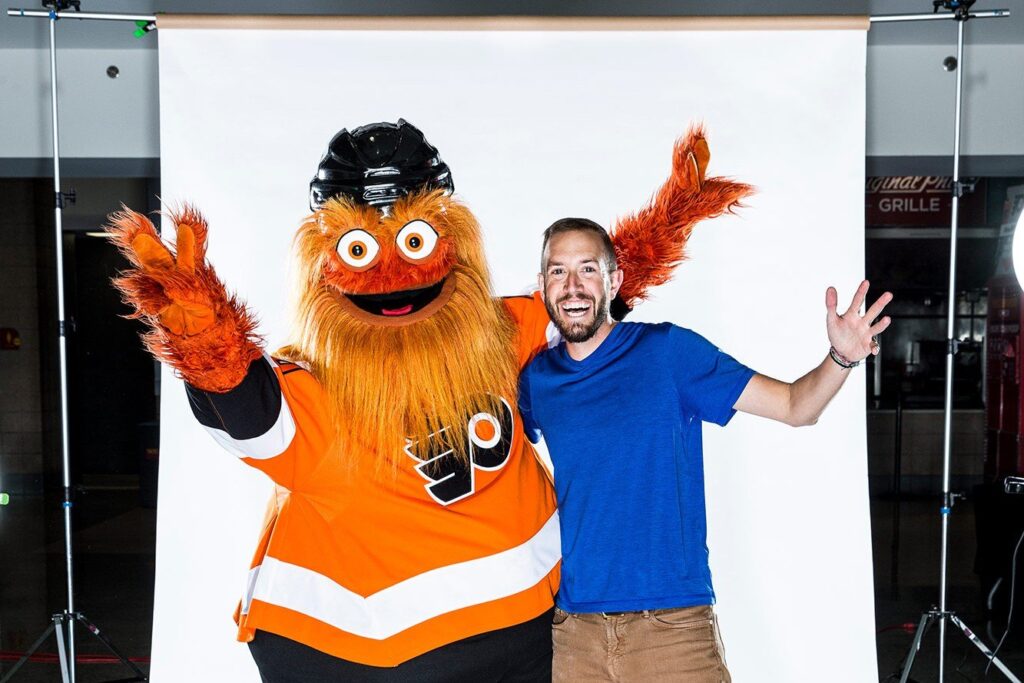Creator Spotlight with Photographer Steve Boyle

This week, we are pleased to introduce photographer Steve Boyle. He “travels the country to create compelling imagery for advertising, editorial, and corporate clients.” He has worked with clients ranging from Gatorade and Major League Baseball to Golf Digest and Wall Street Journal. After reading Steve’s spotlight blog, be sure to follow this Philadelphia photographer on Instagram.
What was the inspiration behind becoming a creator? What do you enjoy most about the creative process?
I’ve always been drawn to visual storytelling. Early on, photography gave me a reason to explore new places and connect with people in a meaningful way. What I enjoy most is the combination of technical precision and improvisation — being able to control light and composition while adapting to real-world unpredictability. As a Philadelphia photographer, whether I’m working in my home city or on location around the world, it’s that blend of control and chaos that keeps me coming back.
Can you talk through your creative process? How long does it take? Does everything you produce make money?
The process can vary widely depending on the project. For a commercial shoot, it starts with a creative brief, then location scouting, talent coordination, and dialing in the lighting setup — whether in studio or on location. For editorial or documentary work, it’s often more instinctual, with a heavier focus on story and timing. Some projects are turned around in a day or two, others span weeks. And no — not everything I create makes money. Some of my most meaningful work has been self-initiated or personal, but those pieces often lead to future paid opportunities.
What do you think is the biggest misconception about your line of work?
That it’s glamorous all the time. People see the finished product — the ad campaign, the magazine spread — and not the 4 a.m. call times, the gear schlepping, or the problem-solving when something inevitably goes sideways. It’s creative, yes, but it’s also logistical, physical, and sometimes downright exhausting.
When did you first become aware of copyright, and why?
I started learning about copyright in journalism school. Back then, it was more about understanding how to license your own work and avoid infringing on others. But once I began working professionally, I realized how essential it was to understand copyright not just as protection, but as leverage — especially in a world where digital content can spread instantly and attribution often gets lost.
Have you experienced copyright infringement and, if so, how has it affected you personally and financially?
Yes, multiple times. I’ve found my images repurposed without permission — sometimes by individuals, other times by brands who should know better. Personally, it’s frustrating. Financially, it’s theft, plain and simple. You invest time, talent, and resources into a shoot, and then someone profits from your work without compensation or credit. It’s one of the more demoralizing parts of being a creator.
What do you do when you encounter someone stealing something you’ve invested your intellect, time, and money into?
First, I document everything — screenshots, URLs, timestamps. Then I reach out directly to request removal or compensation, depending on the situation. If that doesn’t go anywhere, I escalate — sometimes through licensing agencies, sometimes through a copyright attorney. It’s not just about the lost income; it’s about defending the value of the work itself.
What is the best piece of advice that you would give other creators in your field about copyright and how to protect themselves?
Keep records of everything. Register your work when possible, and understand what rights you’re licensing — and what you’re not. If you’re negotiating a contract, don’t be afraid to push back on terms that strip you of ownership. There’s a tendency to undervalue your work early on, but protecting your rights now safeguards your livelihood later.
What is your biggest copyright-related challenge?
Enforcement. Even with clear ownership and registrations, the burden of action falls on the creator. It takes time, energy, and often money to pursue infringements, which is especially hard when you’re juggling multiple shoots or running a small business.
How has AI technology impacted your works and career?
It’s been a mixed bag. On one hand, AI tools can speed up post-production, help with organization, and even spark new creative approaches. On the other, it’s raised serious questions around authorship, ethics, and the devaluation of original content. The line between inspiration and imitation is getting blurrier, and it’s something every creative — especially photographers — needs to keep an eye on.

If you aren’t already a member of the Copyright Alliance, you can join today by completing our Individual Creator Members membership form! Members gain access to monthly newsletters, educational webinars, and so much more — all for free!

